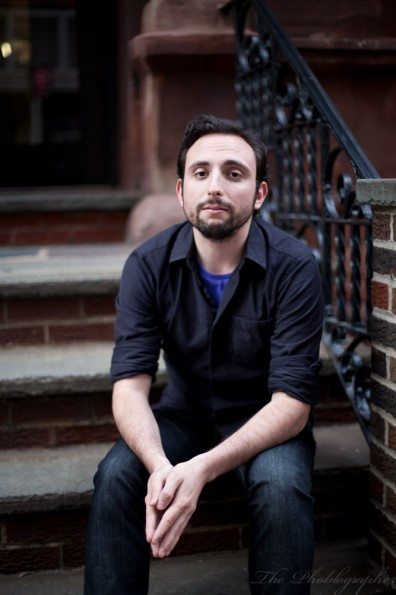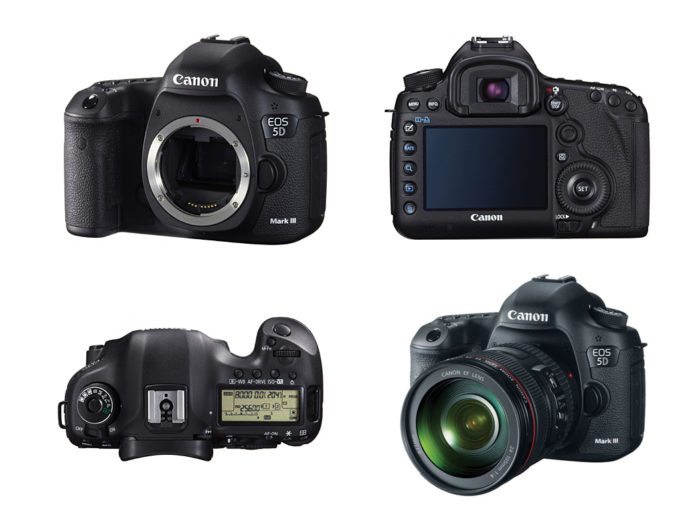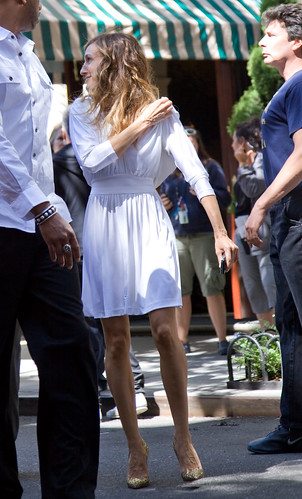Last Updated on 03/02/2012 by Chris Gampat
The cat is out of the bag. Canon has finally announced the Canon 5D Mk III. This is the camera that many photographers have been waiting for to be announced. Indeed, it boasts an impressive specs list. And I’ve got a confession to make: I’m not buying one. My 5D Mk II was purchased three years ago and since then has been ever faithful to me at my side: it’s been with me through rough times, through great times, and it has helped me to pay my rent and afford the comfortable living I currently have.
Let’s start out by saying this and getting it clear: I’ve heard from one rep telling another rep that the 5D Mk III is not forcing a discontinuation of the 5D Mk II; and that indeed the two will co-exist. But that may be hearsay.
But beyond all the technical data, specs, and gearheaded-ness, there is something behind it all that we’re not looking at.
Editor’s Note: Please bear with me and read through the entire post to see all of my points
The Tech Specs You Care About
– 22.3 Megapixel Full Frame CMOS sensor (Approximately the same)
– DiG!C 5+ Image Processor (Better processor, though I’m not sure why it’s not two processors)
– ISO 100-25600 (expandable to L:50 H1:51200, H2: 102400) (How much do you need?)
– Full HD Movie (ISO 100-12800 (H:25600) (For the video crowd, this is really nice. But no 1080p 60P or headphone jack. Nor is there a sensor crop mode or tilting LCD screen. However there is an IPB record mode and for professionals, this is a huge pain to render in post-production. The headphone jack is also a welcome addition.)
– 61-point high-density reticular AF (up to 41 crosstype points) (for sports shooters and those that actually use the various AF points, like 7D users, this is a very welcome addition and was perhaps one of the 5D Mk II’s most fatal flaws)
– 6.0 fps for high continuous shooting (For event, portrait, and sports shooters this is a nice addition)
– 100% viewfinder (no more of that 98% crap, so what you see is what you get. This is much better for composition)
– 3.2-type, approx.1.04m dot (3:2 wide) Clear View LCD II (better for video, really. You honestly don’t want to show a client on a shoot your LCD screen because the image won’t look like that when it hits your computer)
– iFCL metering with 63-zone dual-layer sensor (A better meter is nice, but for experienced users that know how to meter or know the theories behind Sunny 16 and the inverse square law of lighting, you don’t need this.)
– Silent & low vibration modes (The 5D Mk II was super quiet to begin with)
– Dual card slots (CF & SD) (Nice for Eye-Fi card users)
– Comparative Playback function (Very cool, you won’t have to do it in Lightroom)
– Improved durability & water and dust resistance (How much better do we once again need?)
And here’s the big one: ergonomics similar to the Canon 7D.
I Don’t Need Better Video
The Canon 5D Mk III offers users much better video features than were previously available in Canon models. In practice, that means that it has a larger appeal to various users. Windows users may prefer AVI while everyone else will want MOV and the other settings. For those users, they’ll much prefer the options and versatility that the new model offers.
Me? Primarily I’m a still photographer, but I do occasionally dabble in the video world. For my needs, the 5D Mk II is more than good enough. Additionally, have you ever tried to pull focus while recording video with a full frame sensor? It’s not easy.
The Current Focusing Points are Fine
I’ve written various posts about the Canon 5D Mk II’s Autofocus during the Mermaid Day Parade and a Star Wars lightsaber fight. Indeed, the camera was apparently designed for photographers that love to use the middle focus point and recompose: the way most old-school users do it. To that end, unlocking the AF expansion on the 5D Mk II made the outer focusing points much stronger to work with: especially in low light.
If you also want to get the absolute perfect totally accurate autofocus: then sure, go for using the specific AF points. I often do and I totally welcome the expanded number of focusing points. I love it on my 7D.
Now, let’s come back to reality: most of the subject matter I shoot doesn’t require anyone to sit there pixel peeping. And most of my work also goes on the web.
There is absolutely no reason why I need the extra focusing points since I own a 7D. But also, my 5D Mk II’s focusing points are still very accurate.
Lastly, if you’re shooting stopped down quite a bit, no one will be able to tell the difference when you focus and recompose. But if you’re shooting wide open, then use that specific AF point and then recompose via cropping in post-production.
Already Tough as Nails

This Photo Sums up Our Love… by Chris Gampat
Here’s a story for you: during my Olympus E-5 review, there was a period of time during the major blizzard of last year in NYC where I couldn’t carry the tough as diamond E-5. As an alternative, I carried along my 5D Mk II and 24-105mm f4 L IS. And guess what? It survived the blizzard with no problem.
Extremely cold air? Took it like a champ. Heavy downfall of snow? It was like it wasn’t even there. Sleet? It was like shooting fish in a bucket.
Seriously, my 5D Mk II has survived near hell. And the day it dies, I will keep it retired on a shelf in my room.
I’ve Trained Myself to Get it All Right in One Shot
You’re 22; fresh out of college and trying to find a way to make a living. When I graduated, I thrust myself straight into the world of the paparazzo. Think those guys don’t have it tough? Besides having to pull ridiculously long hours (7AM to 3AM), answer emails, track celebs, etc, they have to ensure that when they get the subject that they get the photo perfect in one shot.
Why? They may never get it again.

Prepping the Bride by Chris Gampat
And then there is wedding photography: the same concept applies. Oh, and I had a great mentor.
The new meter in the 5D Mk III isn’t needed for users that know how to meter in the first place. Additionally, all the dynamic range in the world won’t help you if you don’t know how to meter to start.
Fast Lenses and Lighting
You know what will outlive the life of your camera? Your lenses and your lights.
Unless ISO 25,600 can make midnight in NYC look like 12pm, then I don’t really need it. ISO 6400 has served me very well in most instances and in addition to that one must consider the advantages that modern day software allows us.
Seriously, Lightroom gets rid of so much image noise while retaining lots of detail that it’s insane.
More importantly, if I’m shooting with a 5D Mk II, I’m not going to buy a slow lens. I’m going to want to shoot with fast glass. Plus, I use and think of flash not as adding another light, but as an additional creative tool that I use to achieve the effect that I want or need.

Do you really want to become a better photographer? It’s not about your camera. At the end of the day: no one will remember the gear you used or how you shot an image. They’ll only remember the image.
If you’re experienced already, there doesn’t seem like much of a reason to upgrade here. But if you’re not, grab the Canon 5D Mk III, learn it, shoot with it every day and don’t upgrade until you’ve beaten that camera to death.
Please Support The Phoblographer
We love to bring you guys the latest and greatest news and gear related stuff. However, we can’t keep doing that unless we have your continued support. If you would like to purchase any of the items mentioned, please do so by clicking our links first and then purchasing the items as we then get a small portion of the sale to help run the website.






